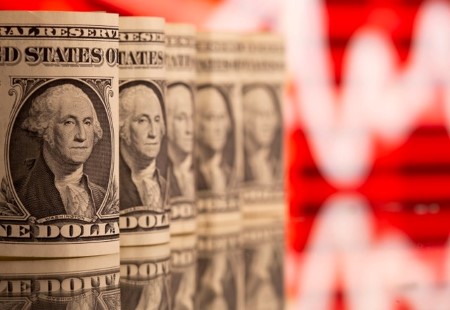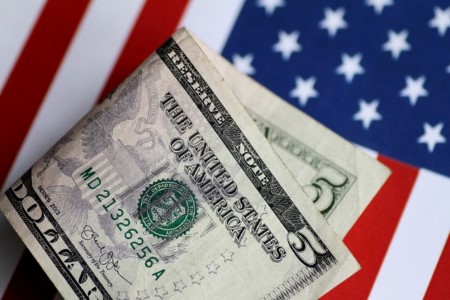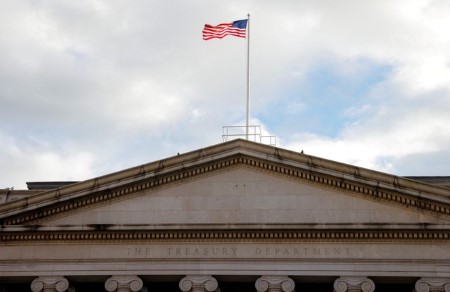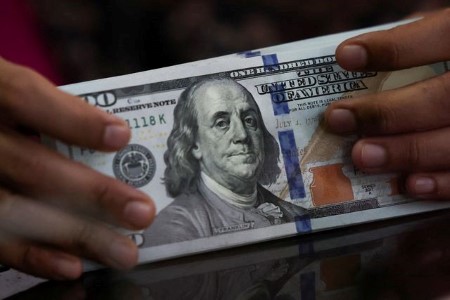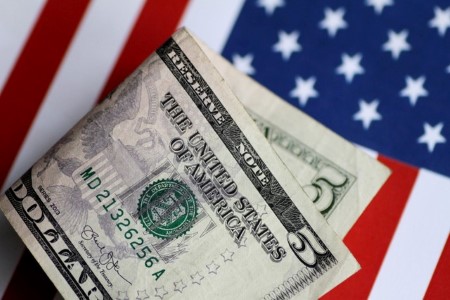Repeats Friday story, no change to text
By Leika Kihara
WASHINGTON, April 25 (Reuters) – Japan may have averted U.S. pressure for a stronger yen in bilateral finance talks on Thursday, but a closer look at officials’ descriptions of the meeting suggests currencies and the Bank of Japan’s interest rate policy may remain key factors in broader trade negotiations.
Speaking to reporters after his first face-to-face talks with U.S. Treasury Secretary Scott Bessent on Thursday, Japanese Finance Minister Katsunobu Kato said they did not discuss exchange-rate targets or a framework to manage yen rates.
There was no accusation made by the U.S. that Japan was intentionally weakening the yen, according to a Japanese finance ministry official who accompanied Kato.
But Kato was tight-lipped on the details of the 50-minute meeting with Bessent, which was held on the sidelines of the International Monetary Fund and World Bank spring meetings in Washington.
When asked whether the U.S. made any specific requests to Japan, Kato said: “I can’t comment because that goes straight into actual discussions.”
Still, there were some hints.
For one, Kato said Japan and the U.S. will continue close and constructive dialogue on exchange rates “in relation to the ongoing bilateral trade negotiations” – language some analysts saw as a sign Washington could make demands on the yen as part of broader trade talks.
The meeting preceded top Japanese trade negotiator Ryosei Akazawa’s scheduled visit to Washington next week for a second round of bilateral trade talks that may prove tortuous for the U.S.
President Donald Trump’s focus on addressing the U.S. trade deficit and his past remarks accusing Japan of intentionally maintaining a weak yen, have fueled market expectations that Tokyo will face pressure to strengthen the yen’s value against the dollar and give U.S. manufacturers a competitive advantage.
“President Trump strongly believes that Japan and China have been intentionally depreciating their currencies. There’s little sign of him changing that view, so markets remain cautious,” said Tsuyoshi Ueno, senior economist at NLI Research Institute.
“If next week’s trade negotiations between Akazawa and Bessent do not go well, Washington’s attention could turn towards exchange rates again,” he said.
The Treasury Department said in a readout on Friday that Bessent and Kato had held productive discussions across a broad range of bilateral issues, including reciprocal trade. They “affirmed their intention to continue their ongoing close consultations regarding issues related to exchange rates,” it said.
BOJ RATE HIKES
Another key sign was Kato’s remark that he explained to Bessent Japan’s recent economic developments “including wage hikes.” He added that in doing so, he also talked about Japan’s “price developments.”
That suggests discussions may have touched upon Japan’s monetary policy, as both wages and prices are key to the timing and pace of further interest rate hikes by the BOJ.
Sources have told Reuters the slow pace at which the BOJ is raising borrowing costs from ultra-low levels could come under fire in bilateral trade talks.
Steady rises in wages and inflation were key to the BOJ’s decision to exit a massive stimulus last year and raise its short-term interest rate to 0.5% in January.
With inflation exceeding its 2% target for three consecutive years and big firms continuing to offer bumper pay hikes this year, the BOJ has signaled its readiness to keep raising rates.
But the central bank’s rate-hike path has been complicated by Trump’s tariffs, which threaten to derail Japan’s fragile economic recovery and have prodded analysts to push back the expected timing of the next rate increase.
While warning of heightening economic uncertainty, BOJ Governor Kazuo Ueda on Thursday repeated the central bank’s readiness to keep hiking rates.
“It’s notable that Kato and Bessent likely discussed Japan’s wage developments,” said Katsuhiro Oshima, chief economist at Mitsubishi UFJ Morgan Stanley Securities, adding that Ueda’s remarks suggest the BOJ remains on course to hike rates.
“Wage hikes would be a win for Japan’s economy, a win for the U.S. from the perspective of exchange rates, a win for Japanese households which will see purchasing power increase, and a win for the BOJ by making it easier to raise rates.”
(Reporting by Leika Kihara;
Editing by Dan Burns and Paul Simao)
((leika.kihara@thomsonreuters.com; +813-6441-1828; Reuters Messaging: leika.kihara.reuters.com@reuters.net))







 DOWNLOAD
DOWNLOAD






